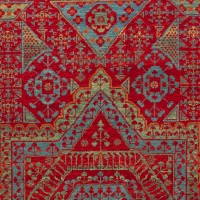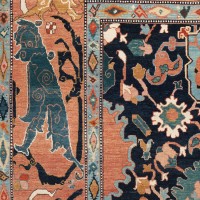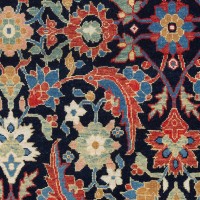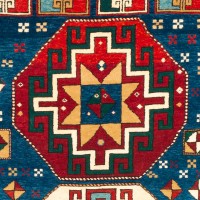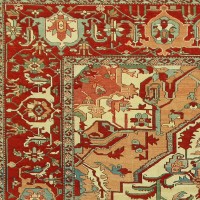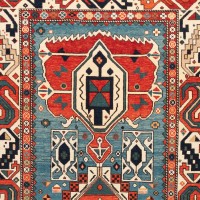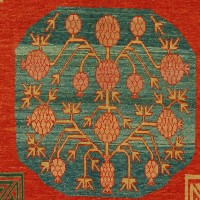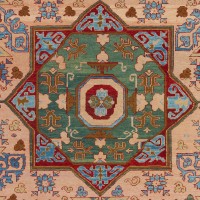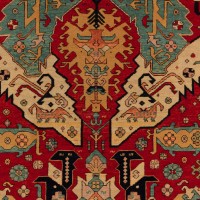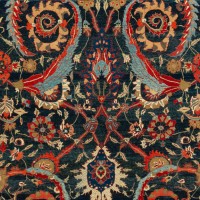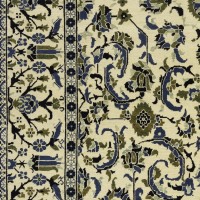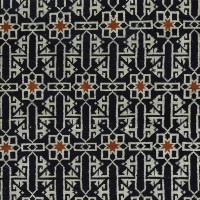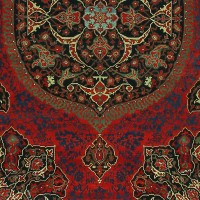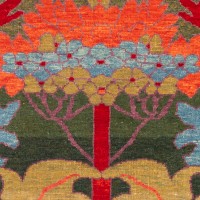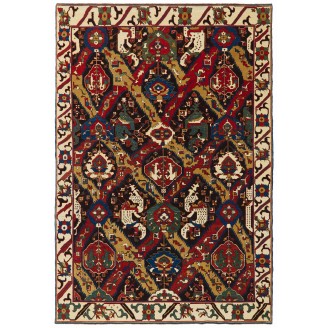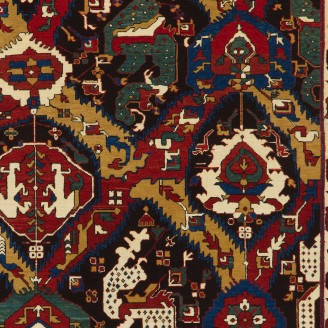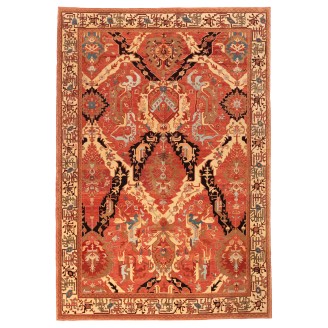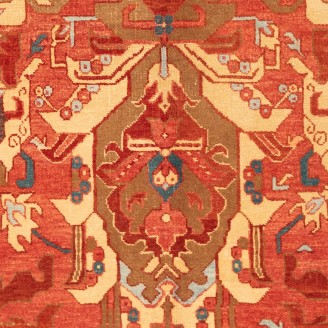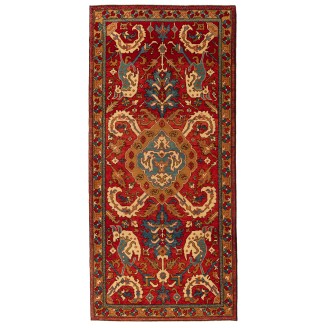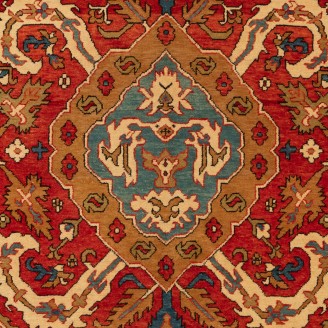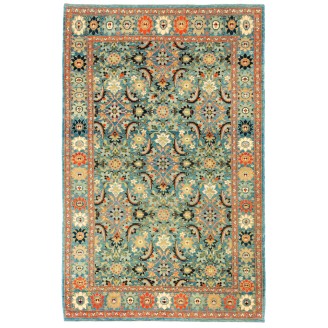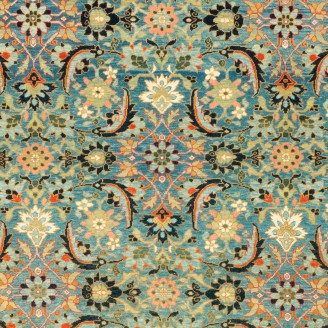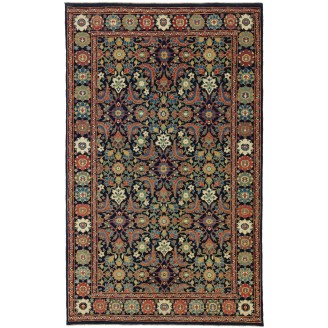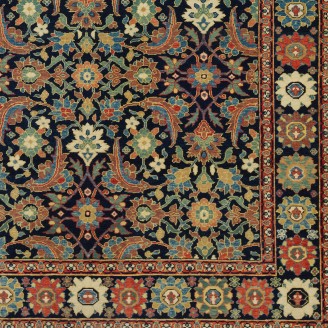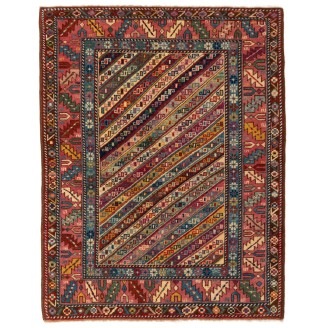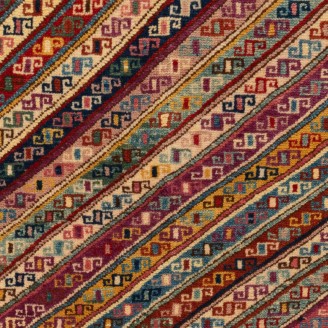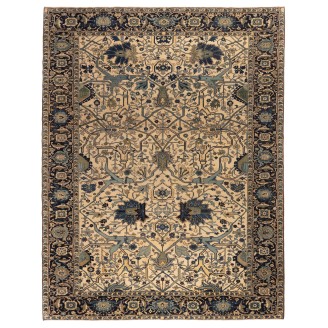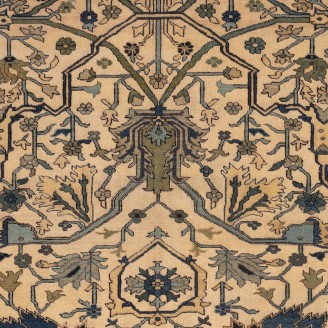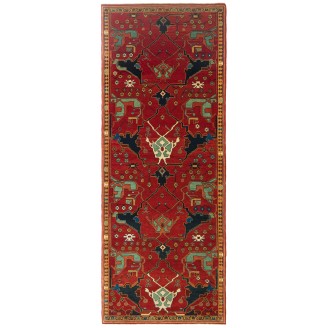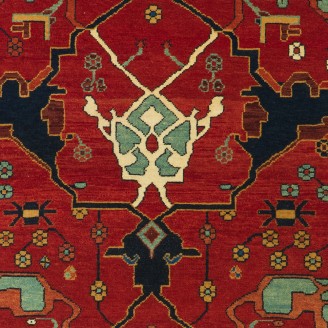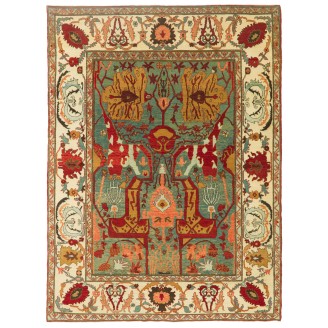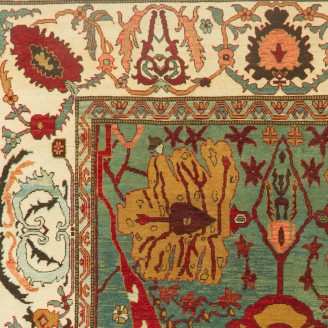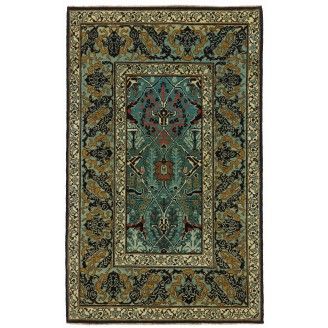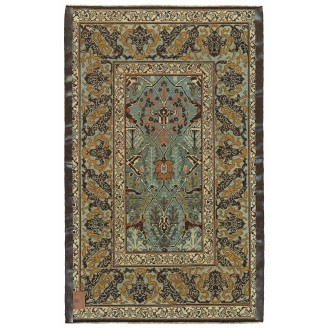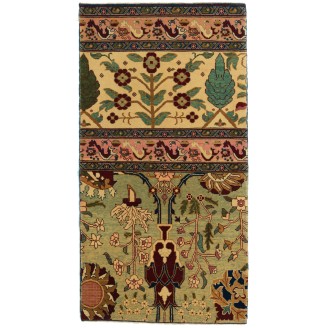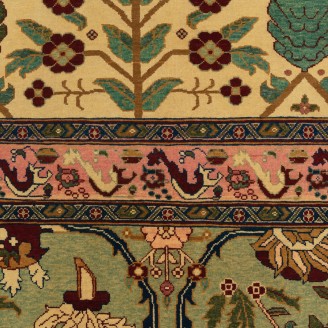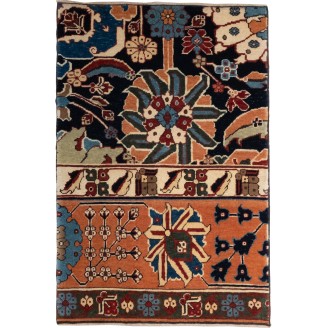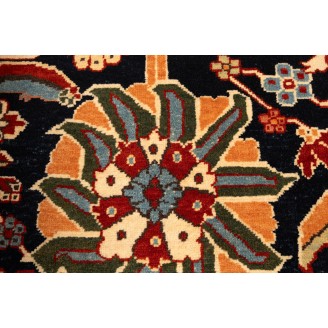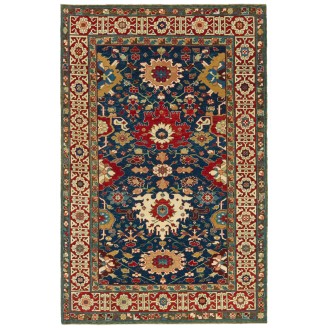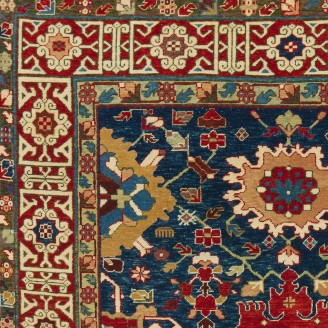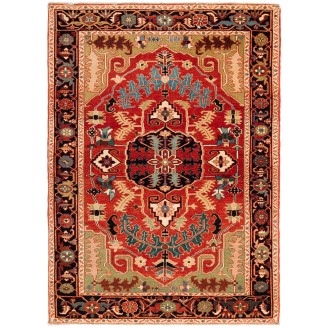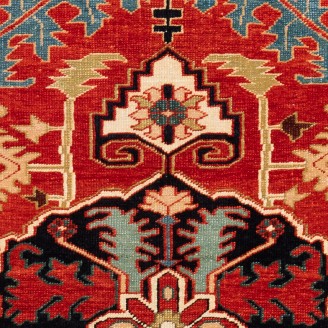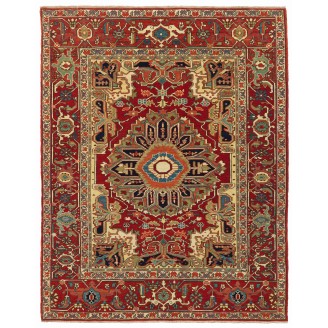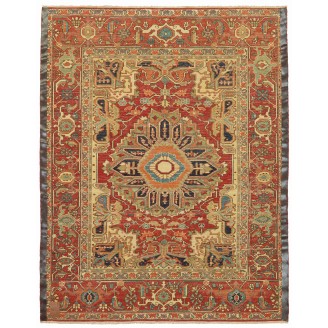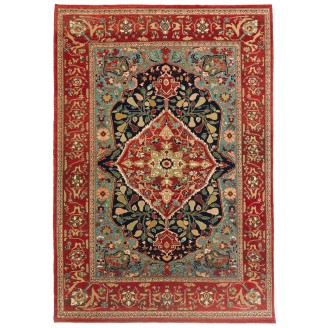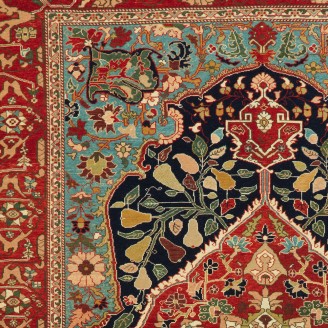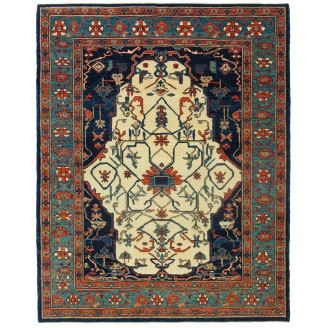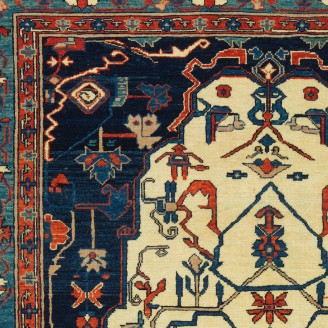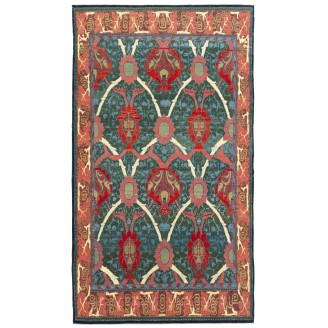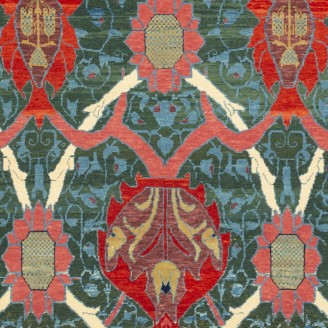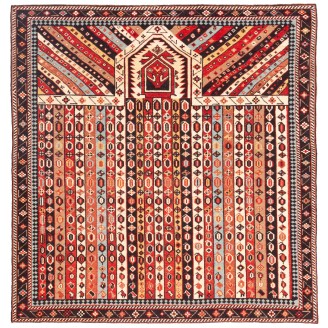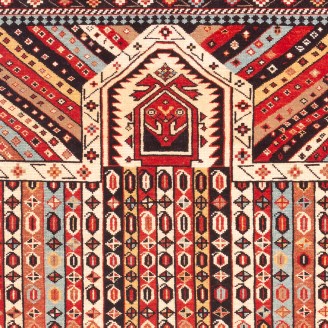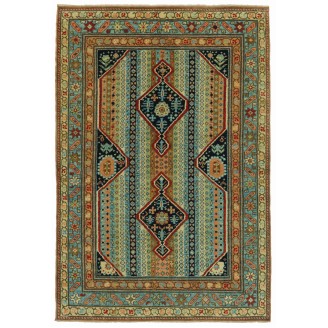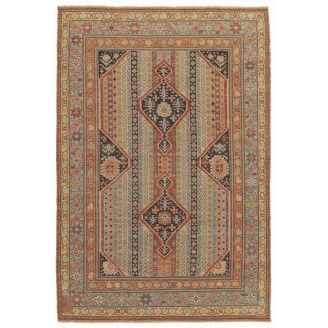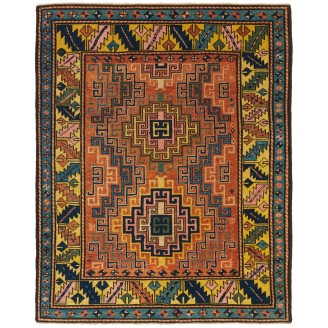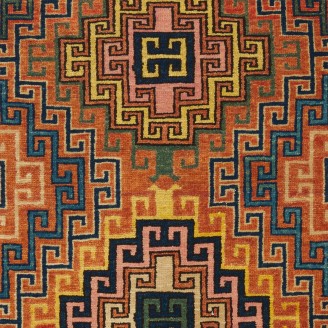Model: ART00598
Dimensions: 10'8" X 7'3"(327cm x 222cm)
The source of the rug comes from the book Caucasian Carpets, E. Gans-Reudin, Thames and Hudson, Switzerland 1986, pg.37. This luxurious and varied work is known as the Cassirer dragon rug' from the name of its previous owner. It is examined in great detail in May U. Beattie's The Thyssen-B..
Price:
$25,200
Ex Tax:$25,200
Model: ARTK0011
Dimensions: 6'11" X 10'2"(213cm x 310cm)
The source of the rug comes from the book Caucasian Carpets, E. Gans-Reudin, Thames and Hudson, Switzerland 1986, pg.37. This luxurious and varied work is known as the Cassirer dragon rug' from the name of its previous owner. It is examined in great detail in May U. Beattie's The Thyssen-Bornemisza ..
Price:
$22,000
Ex Tax:$22,000
Model: ART00250
Dimensions: 3'4" X 7'1"(104cm x 218cm)
There has long been a fascination with the symbolism of the dragon and its depiction in carpet weavings. The design of ‘Dragon’ carpets consists of a field pattern composed of different colored overlaid lattices formed of pointed, serrated leaves creating intersecting lozenges, which alternately con..
Price:
$3,900
Ex Tax:$3,900
Model: ART00377
Dimensions: 5'4" X 8'6"(165cm x 260cm)
The source of the rug comes from the book Antique Rugs of Kurdistan A Historical Legacy of Woven Art, James D. Burns, 2002 nr.31. This blue background rug has a variation of masi awita (fish around the lotus) pattern from Senna, Eastern Kurdistan area late 19th century. The field design on this rug ..
Price:
$9,200
Ex Tax:$9,200
Model: ART00342
Dimensions: 5'4" X 8'8"(163cm x 266cm)
The source of the rug comes from the book Antique Rugs of Kurdistan A Historical Legacy of Woven Art, James D. Burns, 2002 nr.31. This blue background rug has a variation of masi awita (fish around the lotus) pattern from Senna, Eastern Kurdistan area late 19th century. The field design on this rug ..
Price:
$6,600
Ex Tax:$6,600
Model: ART00458
Dimensions: 3'3" X 4'2"(101cm x 129cm)
The source of the rug comes from the book Tapis du Caucase - Rugs of the Caucasus, Ian Bennett & Aziz Bassoul, The Nicholas Sursock Museum, Beirut, Lebanon 2003, nr.42 and Oriental Rugs Volume 1 Caucasian, Ian Bennett, Oriental Textile Press, Aberdeen 1993, nr.171-172 and Caucasian Carpets, E. G..
Price:
$1,500
Ex Tax:$1,500
Model: ARTK0008
Dimensions: 8'10" X 11'5"(271cm x 350cm)
The source of the rug comes from the book Islamic Carpets, Joseph V. McMullan, Near Eastern Art Research Center Inc., New York 1965 nr.22. This is a system of arabesque-designed 19th-century rugs from Gerous ( Garrus or Garus ) region, Eastern Kurdistan area. This rug is a splendid echo of the Arabe..
Price:
$33,000
Ex Tax:$33,000
Model: ART00605
Dimensions: 3'3" X 8'4"(101cm x 256cm)
The source of the rug comes from the book Islamic Carpets, Joseph V. McMullan, Near Eastern Art Research Center Inc., New York 1965 nr.22. This is a system of arabesque-designed 19th-century rugs from Gerous ( Garrus or Garus ) region, Eastern Kurdistan area. This rug is a splendid echo of the ..
Price:
$5,620
Ex Tax:$5,620
Model: ART00589
Dimensions: 6'1" X 8'2"(186cm x 250cm)
The source of the rug comes from the book Islamic Carpets, Joseph V. McMullan, Near Eastern Art Research Center Inc., New York 1965 nr.22. This is a system of arabesque-designed 19th-century rugs from Gerous ( Garrus or Garus ) region, Eastern Kurdistan area. This rug is a splendid echo of the ..
Price:
$10,100
Ex Tax:$10,100
Model: ART00491
Dimensions: 5'4" X 3'4"(163cm x 104cm)
The source of the rug comes from the book Islamic Carpets, Joseph V. McMullan, Near Eastern Art Research Center Inc., New York 1965 nr.22. This is a system of arabesque-designed 19th-century rugs from Gerous ( Garrus or Garus ) region, Eastern Kurdistan area. This rug is a splendid echo of the ..
Price:
$3,550
Ex Tax:$3,550
Model: ART00548
Dimensions: 2'9" X 5'2"(84cm x 158cm)
The most dramatic of the Gerous ( Garrus, Gerus, Garus ) carpets are those with an "asymmetric" design. Only a section of the original is shown, in the same way, many Lotto carpets were woven. It is difficult to guess the size of these carpets from a photo, but here we enter the area of the "Wagireh..
Price:
$1,500
Ex Tax:$1,500
Model: ART00602
Dimensions: 1'11" X 2'11"(60cm x 89cm)
The most dramatic of the Gerous ( Garrus, Gerus, Garus ) carpets are those with an "asymmetric" design. Only a section of the original is shown, in the same way, many Lotto carpets were woven. It is difficult to guess the size of these carpets from a photo, but here we enter the area of the "Wagireh..
Price:
$1,086
Ex Tax:$1,086
Model: ART00479
Dimensions: 4'8" X 7'1"(143cm x 217cm)
The source of the rug comes from the book Orient Star - A Carpet Collection, E. Heinrich Kirchheim, Hali Publications Ltd, 1993 nr.79. This is an unusual design of 18th or 19th-century rug from Khila, Kuba region East Caucasus area. Very similar palmettes, drawn in a curvilinear manner and combined ..
Price:
$6,200
Ex Tax:$6,200
Model: ARTK0010
Dimensions: 5'8" X 7'10"(175cm x 239cm)
This is a medallion design rug from the late 19th century, Heriz region, Northwest Persia area. Heriz ( Heris ) is a special Turkish knot weaving area of Persia, including many villages, located east of Tabriz in northwest Persia. Weaving has been carried on in the Heriz area certainly since the beg..
Price:
$8,500
Ex Tax:$8,500
Model: ART00730
Dimensions: 6'3" X 5'0"(191cm x 154cm)
This is a medallion design rug from the late 19th century, Heriz region, Northwest Persia area. Heriz ( Heris ) is a special Turkish knot weaving area of Persia, including many villages, located east of Tabriz in northwest Persia. Weaving has been carried on in the Heriz area certainly since the beg..
Price:
$5,290
Ex Tax:$5,290
Model: ART00595
Dimensions: 6'3" X 9'1"(193cm x 278cm)
This is a medallion design with the pear tree, flowers, and palmettes rug from the late 19th century, Heriz region, Northwest Persia area. Heriz ( Heris ) is a special Turkish knot weaving area of Persia, including many villages, located east of Tabriz in northwest Persia. Weaving has been carried o..
Price:
$11,600
Ex Tax:$11,600
Model: ART00519
Dimensions: 4'9" X 6'0"(147cm x 184cm)
This is a white ground rug designed in the 19th century, from the Heriz region, Northwest Persia area. Heriz ( Heris ) is a special Turkish knot weaving area of Persia, including many villages, located east of Tabriz in northwest Persia. Weaving has been carried on in the Heriz area certainly since ..
Price:
$5,200
Ex Tax:$5,200
Model: ART00225
Dimensions: 5'8" X 9'10"(175cm x 302cm)
The source of carpet comes from the book Arts & Crafts Carpets, Malcolm Haslam, David Black, 1991, fig.49. This Hammersmith carpet was designed by William Morris in 1882, in the United Kingdom. In 1887 English artist and bookbinder T.J. Cobden Sanderson, suggested that a new group be named the “..
Price:
$6,700
Ex Tax:$6,700
Model: ART00033
Dimensions: 3'9" X 3'10"(115cm x 119cm)
The source of the rug comes from the book Oriental Rugs Volume 1 Caucasian, Ian Bennett, Oriental Textile Press, Aberdeen 1993, nr.110. A related example dated 1280 A.H. (A.D. 1863) is illustrated by Peter Bausback in his Antike Orientteppiche, 1978 (p. 215). This is a vertical stripe prayer rug fro..
Price:
$3,400
Ex Tax:$3,400
Model: ART00732
Dimensions: 5'8" X 3'11"(173cm x 120cm)
The source of the rug comes from the book Tapis du Caucase - Rugs of the Caucasus, Ian Bennett & Aziz Bassoul, The Nicholas Sursock Museum, Beirut, Lebanon 2003, nr.35. This is a vertical stripe rug from the late 19th century, Karabagh region, Caucasus area. This rug shows in the field a de..
Price:
$3,940
Ex Tax:$3,940
Model: ART00461
Dimensions: 4'3" X 5'3"(132cm x 162cm)
This is a complete hooked field with double medallions rug from the late 19th century, Kazak region, Caucasus area. A striking field design features two medallions each with concentric hook motifs, with a double latch-hooks design in the center of medallions. It is framed with a series of borders, t..
Price:
$2,500
Ex Tax:$2,500
